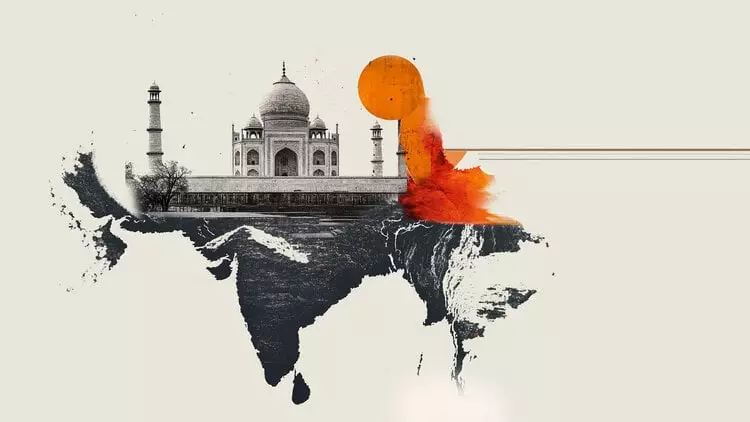The Indian Rupee (INR) is displaying a noteworthy resilience in the Asian market as of Tuesday, edging higher and reflecting a strong performance in recent days. This upward trend is underpinned by multiple factors, including a positive momentum in Indian equities and global economic uncertainties that seem to weigh on the US Dollar (USD). As we analyze the nuances behind this currency movement, it becomes evident that both internal dynamics and external influences are at play in shaping the trajectory of the INR.
With Indian equities rallying, it is essential to recognize how this phenomenon can have a cascading effect on the INR. A buoyant stock market not only encourages domestic and foreign investment but can also bolster the overall confidence in the nation’s economy. Investors eyeing the Indian market may feel more inclined to purchase Rupees, thus supporting its value.
On the global front, anxieties surrounding the Federal Reserve’s policies, particularly regarding monetary independence, could herald additional vulnerabilities for the USD. Speculation around interest rate adjustments remains at the forefront, as market participants eagerly anticipate statements from Fed officials like Patrick Harker and Neel Kashkari. The specter of downward pressure on the USD, compounded by domestic critiques aimed at Fed Chair Jerome Powell, particularly from former President Trump, lends additional support to the INR.
Impact of Central Banking Policies
The role of the Reserve Bank of India (RBI) cannot be emphasized enough in this context. The central bank’s dual mandate to maintain both stable prices and currency stability engages it actively in the foreign exchange market. Recent interactions have pointed to the RBI’s inclination to purchase USD to stabilize the Rupee’s ascent, reflecting the delicate balance it maintains between dampening inflationary pressures and curbing excessive currency appreciation.
The notion of an impending interest rate cut looms large, especially following the recent dip in inflation rates to levels unseen in over five years. This could unveil complexities for the INR, particularly as lower interest rates tend to diminish the currency’s appeal to investors. However, it is crucial to recognize that should inflation maintain its declining trajectory, the RBI may be prompted to adopt a more accommodative posture, which could paradoxically enhance foreign investment flows.
Exogenous Shocks and Trade Relations
In addition to the RBI’s regulatory framework, external factors play a critical role in currency valuation. Fluctuations in crude oil prices and ongoing geopolitical tensions can lead to significant shifts in the Indian economy, given its heavy reliance on oil imports. Thus, the ripple effects of global oil prices inevitably impact the Rupee, amplifying the sensitivities of the Indian currency to international market dynamics.
Recent developments in trade negotiations between India and the United States further complicate this landscape. The announcement of a Bilateral Trade Agreement (BTA) represents a significant production of both voices in favor and against, and the formal acknowledgment of progress on such a front can only catalyze greater economic synergy between the two nations. Enhanced trade relations, ideally yielding increased exports and capital inflows, could serve as a bulwark for the INR amid external economic turbulence.
Technical Analysis: The Importance of Key Levels
From a technical standpoint, it is essential to observe the critical trading levels influencing investor sentiment. INR’s recent price action suggests an ongoing battle near the 100-day Exponential Moving Average (EMA) that serves as a key resistance level. Failure to decisively hold above this threshold could invite bearish sentiment and send the currency into a deeper downward spiral unless significant structural support at the lower boundary — around 85.00— is maintained.
The insights derived from the 14-day Relative Strength Index (RSI) reflect a cautionary approach. Stuck below the midline, this indicator speaks volumes about the potential for further downside. In such a scenario, market participants might brace for deeper corrections, particularly if bearish macroeconomic signals take center stage.
A Long-term Perspective on the Indian Economy
Looking outward, the outlook for the Indian economy, and by extension the INR, reveals a landscape rich with opportunities yet laden with challenges. Prospects for sustained economic growth hinge on factors including infrastructure development, efficiency in capital markets, and enhanced foreign direct investment (FDI).
With higher growth rates likely to attract investment and promote an environment conducive to a stronger INR, policymakers must tread carefully. Although the current economic environment appears favorable, it is critical to recognize the inherent volatility in global markets that could just as easily reverse positive trends. Thus, fostering a stable and transparent economic framework remains paramount for long-term currency integrity and vibrancy.
Through a detailed analysis of both immediate influences and broader economic indicators, we can grasp the palpable intricacies shaping the Indian Rupee’s trajectory amidst a complex global landscape.

